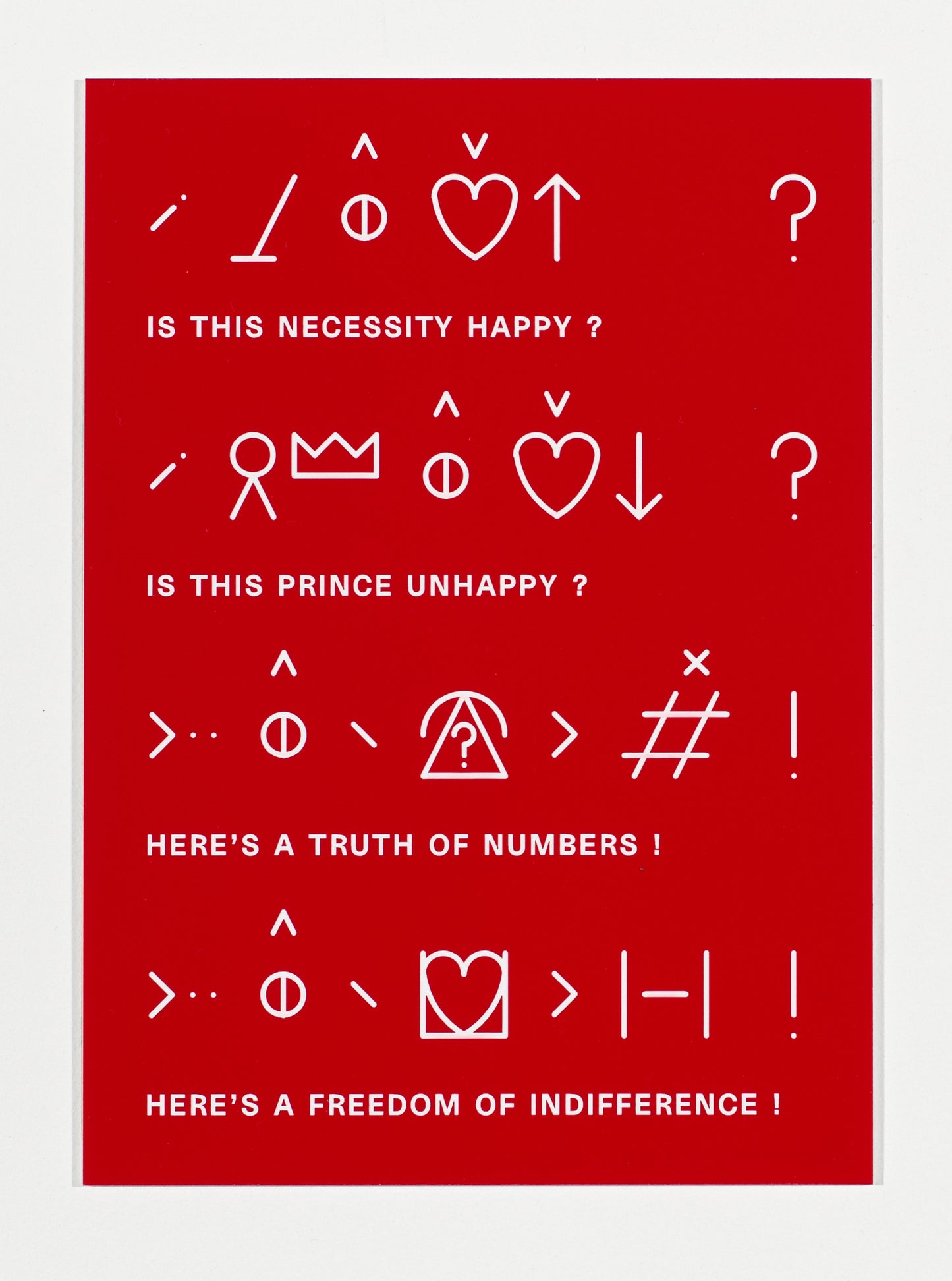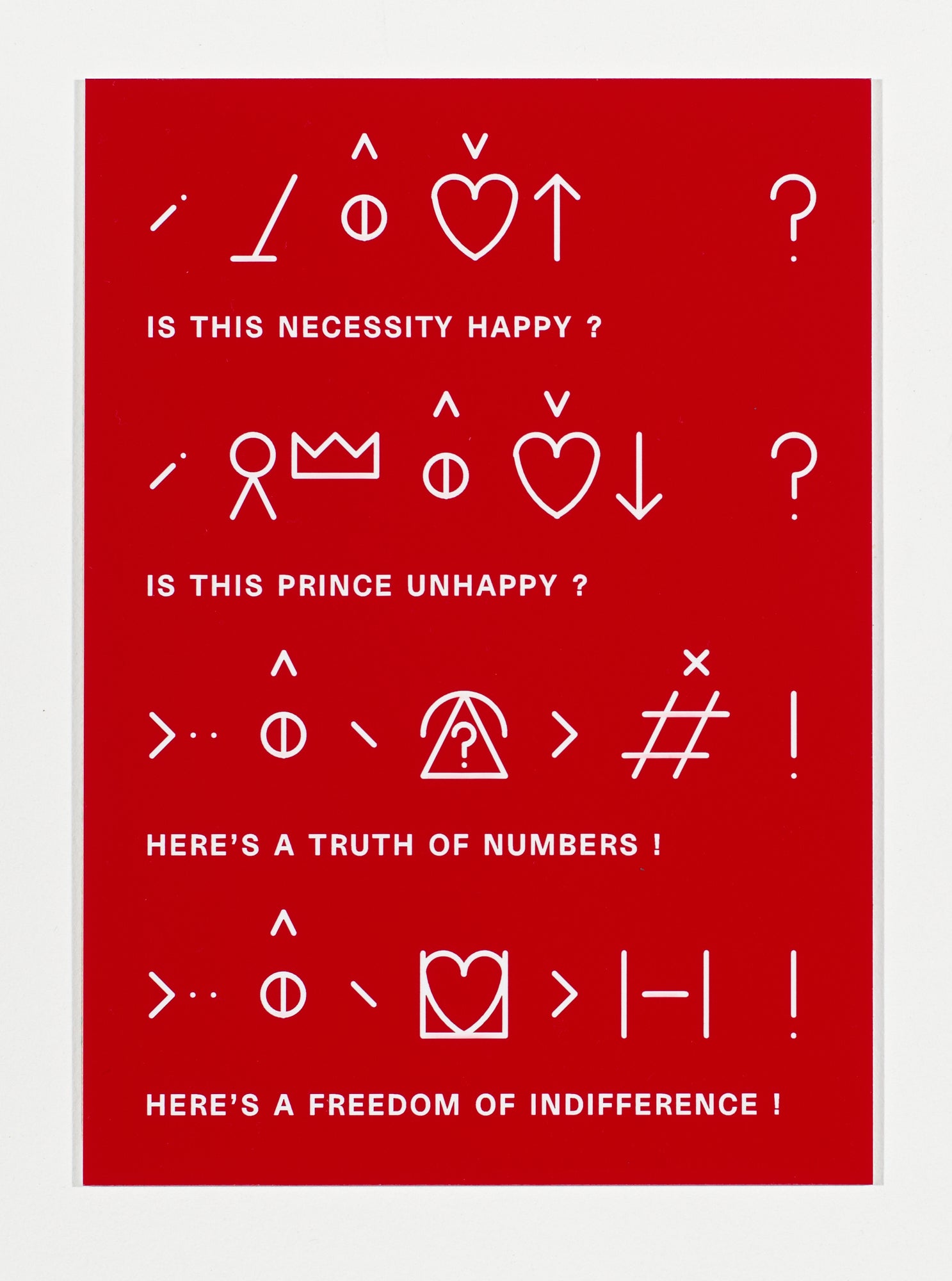Questions and answers from Bliss’s favourite Leibniz / for the kids’ room, 2025
Questions and answers from Bliss’s favourite Leibniz / for the kids’ room
One of the most beautiful poetry projects to come out of Naarm / Melbourne recently is Rowan McNaught’s revival of CK Bliss’s Semantography, also known as ‘Blissymbolics’, or simply ‘Bliss’.
Bliss is a little-known, purely written (i.e. not spoken), universal pictographic language, or pasigraphy. First proposed in 1949 by CK Bliss, a Chernivtsi-born Holocaust survivor who emigrated to Sydney in 1947.
As McNaught writes, “Emerging out of the turmoil of the 20th century, Bliss was presented as a ‘world writing for one world’. This motto supported its primary use case: it was imagined as an aid for international communication and collaboration, and so, in a general sense, towards peace.”
Although Bliss was considered by its maker to be a revolutionary invention, one of the apparent, humble uses for Bliss was its trans-lingual application for signage. McNaught honours this by inscribing his translations on engraved traffolyte (a plastic material commonly used for signage). His words, however, a cribbed from various sources, are not straightforward directives. McNaught advises that, to become fluent in Bliss, “you can only fall in love with it, the way you fall in love with a person: nonfluently, partially, with some degree of creative misunderstanding.”
Couldn't load pickup availability

